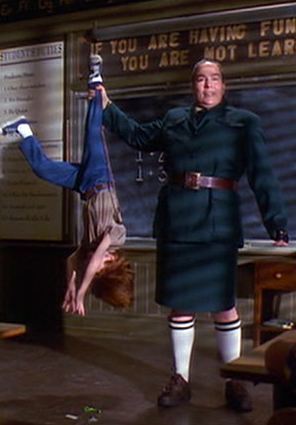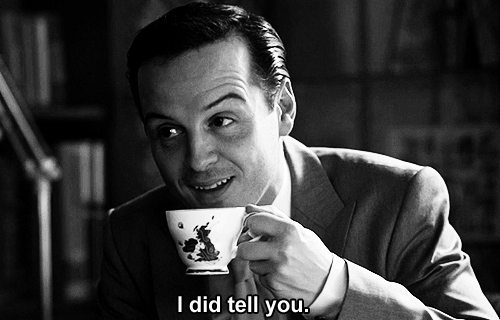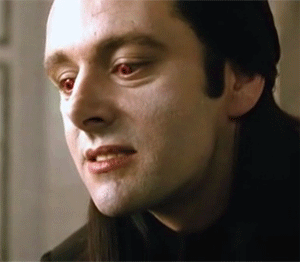The devil is in the detail: Writing Villains

Enemies, opponents, antagonists, villains. Whatever you like to call them, we love to hate them! Try to imagine your favourite books or films without the evil guys. How about Harry Potter without Voldemort or Draco Malfoy?
Or Lord of the Rings without Sauron and the orcs? Where would Twilight be without the James Coven? Or the Baudelaire children without Count Olaf?
Readers adore enemies in stories because it’s a secret pleasure to explore the darker side of our imaginations. But the reason we DEMAND them is because the nasty things they do to our heroes and heroines help us to love them so much more.
A good villain makes you sympathise with the hero so completely that the reader becomes desperate for them to succeed. Below are 18 top tips on creating great enemies in your own stories.
Tip 1 - Make your villain cause pain and suffering to characters we either like or who are innocent or defenceless.
This is the easiest and most effective way to make your reader hate a character. The more sadistic/merciless they are, the more we despise them. Voldemort attacks the defenceless Harry Potter when he’s just a tiny baby, instantly achieving villain status. Darth Vader destroys an ENTIRE PLANET.

As world-leading novelist Stephen King says: ‘To create a great opponent, make them hunger for other people’s suffering. That way they become the embodiment of pure evil.’
Tip 2 – Make them strongly want something the reader will hate them for.
In the Lion King, Scar wants to be head of the Pride. In Stormbreaker Herod Sayle can’t wait to kill as many school children in England as possible. In Lord of the Rings Sauron wants to enslave the world. We automatically detest him for it.
Tip 3 - Give the enemy control over your hero’s life.
Miss Trunchbull in Matilda locks kids away in the vicious ‘chokey’. Put your own villain in charge where no one can stop them.

Tip 4 - Make them appear more powerful than your hero.
Harry Potter is just a school boy wizard, but Voldemort is a master of the dark arts. The reader becomes consumed with fear for the hero.
Tip 5 – Ensure they break promises.
In Stormbreaker, Nadia Vole pretends she’s going to free Alex – then dumps him into a tank with a giant jellyfish. ‘When a character breaks a promise or betrays a trust, the audience takes that betrayal personally,’ says Orson Scott Card, award winning SF writer. ‘The villain has achieved true villain status, and readers will be longing for their downfall.’

Tip 6 - Make them a coward.
Malfoy’s always hiding behind Crabbe and Goyle or the influence of his family name. A hero never does that.
Tip 7 - Make them stuck up and condescending towards others.
We hate characters who think they are superior to us, people who sneer or treat powerful, influential, rich people better than the poor and powerless.
Tip 8 - Make them boast.
A hero remains modest. When things go right for villains they take all the credit whether they deserve it or not.

Tip 9 - Keep them humourless.
A heroine retains a sense of humour. When things go wrong for opponents, have them whine. Or, if they do joke, always make it at someone else’s expense.
Tip 10 - Have them blame everyone but themselves.
When things go wrong, villains always accuse and criticize others. Ensure yours do the same.
Tip 11 – Emphasise their vanity.
We automatically dislike anyone who brags about their looks, strength, deeds or the amount of money they have. Think of Moriarty.

Tip 12 - Make them cheats and liars.
Heroes are honest. Villains can’t be trusted.
Tip 13 - Give them no regard for other people’s feelings.
A hero is self-sacrificing and considers other people. Villains don’t care what happens to anyone else. They only help themselves. Think of the contempt the James clan in Twilight have for all humans.

Tip 14 - Make them petty instead of noble.
When Harry meets Ron on the train to Hogwarts he shares his food with him – he’s generous and warm-hearted. But what does Malfoy do? Cracks jokes about Ron’s poverty and talks about his ‘useless’ family. We despise him for it.
Tip 15 - Make them ugly OR exceptionally handsome.
We tend to distrust both. Think of the lovely but cruel step-mother in Snow White. Or Gaston in Beauty and the Beast.
Tip 16 - Villains rarely doubt themselves.
In Twilight hero Edward is constantly worried that he cannot trust himself with Bella. That makes him more human. In Hercules, Hades is only looking out for Number One. Himself. Villains just pursue their own interests and don’t question themselves or care who they step on.
Tip 17 - Build up the suspense by not revealing the villain too soon.
Sauron in Lord of the Rings is just a vast eye – and all the more alarming because we never really know what he looks or sounds like. To create real fear, keep you reader guessing for as long as possible. In Toy Story 3, cuddly Lotso Huggin Bear turns out to be a megalomaniac.

Tip 18 – Have people talk about your enemy fearfully.
The importance of this final tip is often neglected, but not by great storytellers. Characters are so afraid of Voldemort that they won’t even say his name. Sauron hardly appears in Lord of the Rings, but when you read the novel you always feel his presence. The reason is that even tough warriors like Aragorn never stop talking about him apprehensively. When great and brave characters like Aragorn and Gandalf regard Sauron as immensely dangerous, readers automatically get nervous. Have your own strongest characters do the same. Use them to stoke up the fear of your enemy. It works beautifully.
Published on November 23, 2017 13:51
No comments have been added yet.



